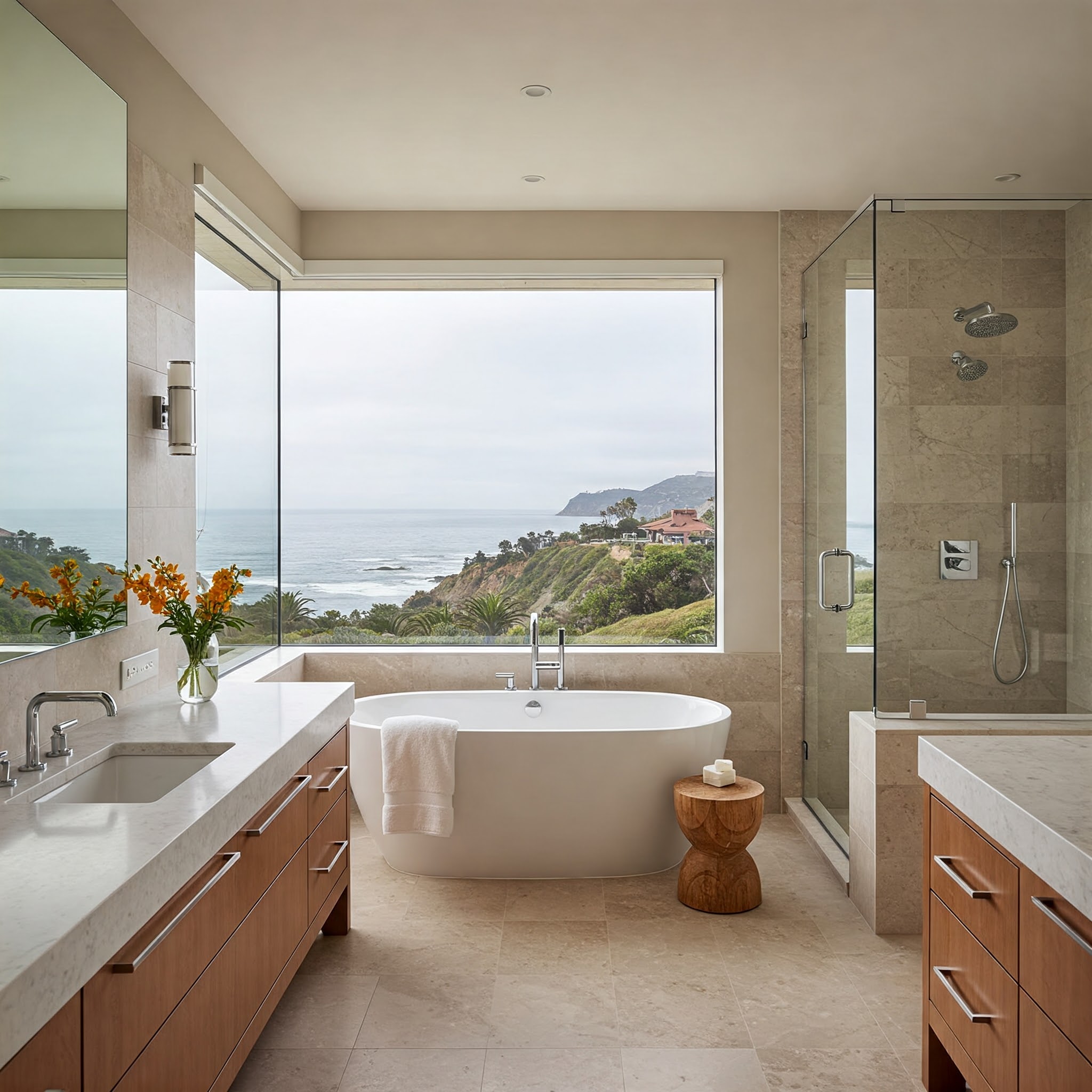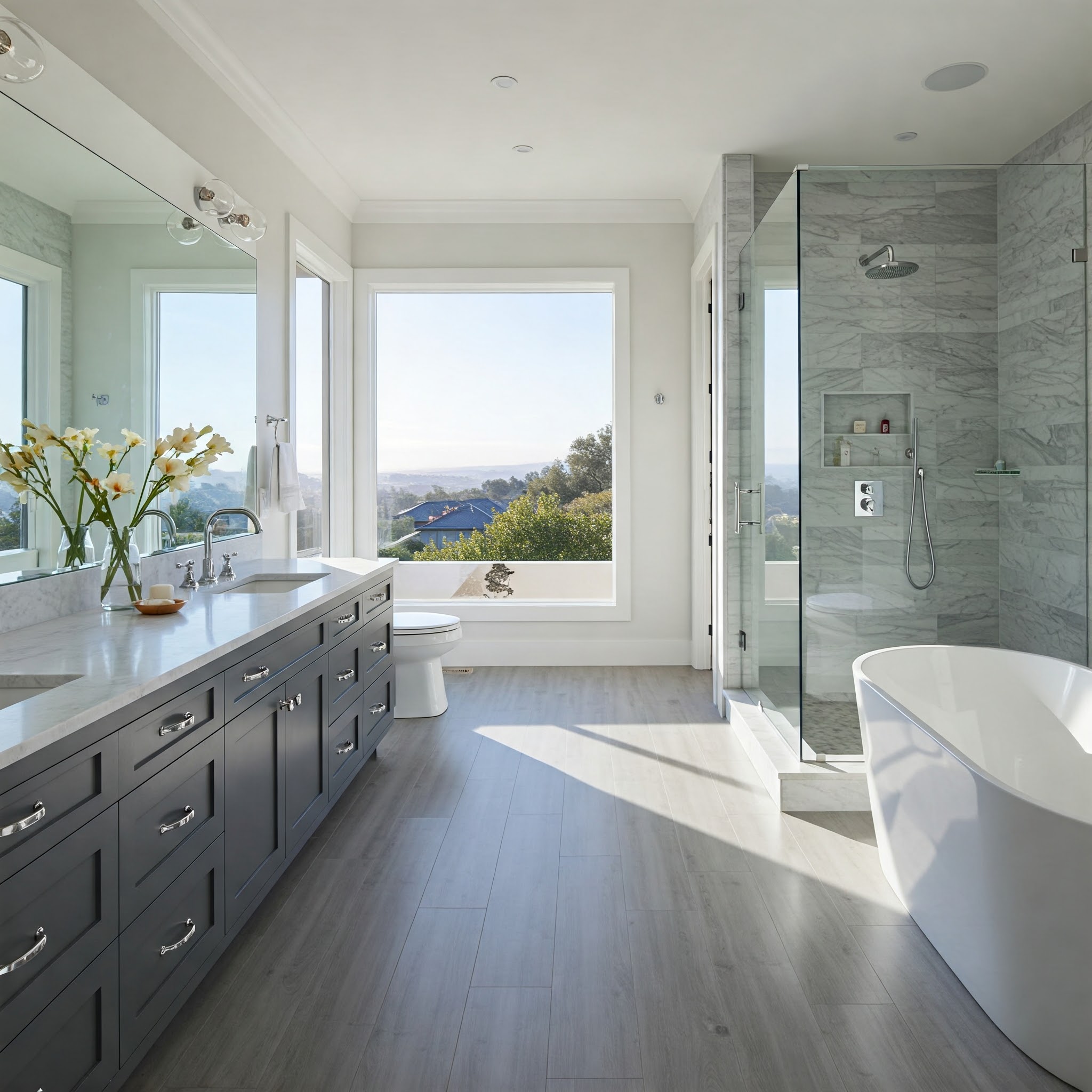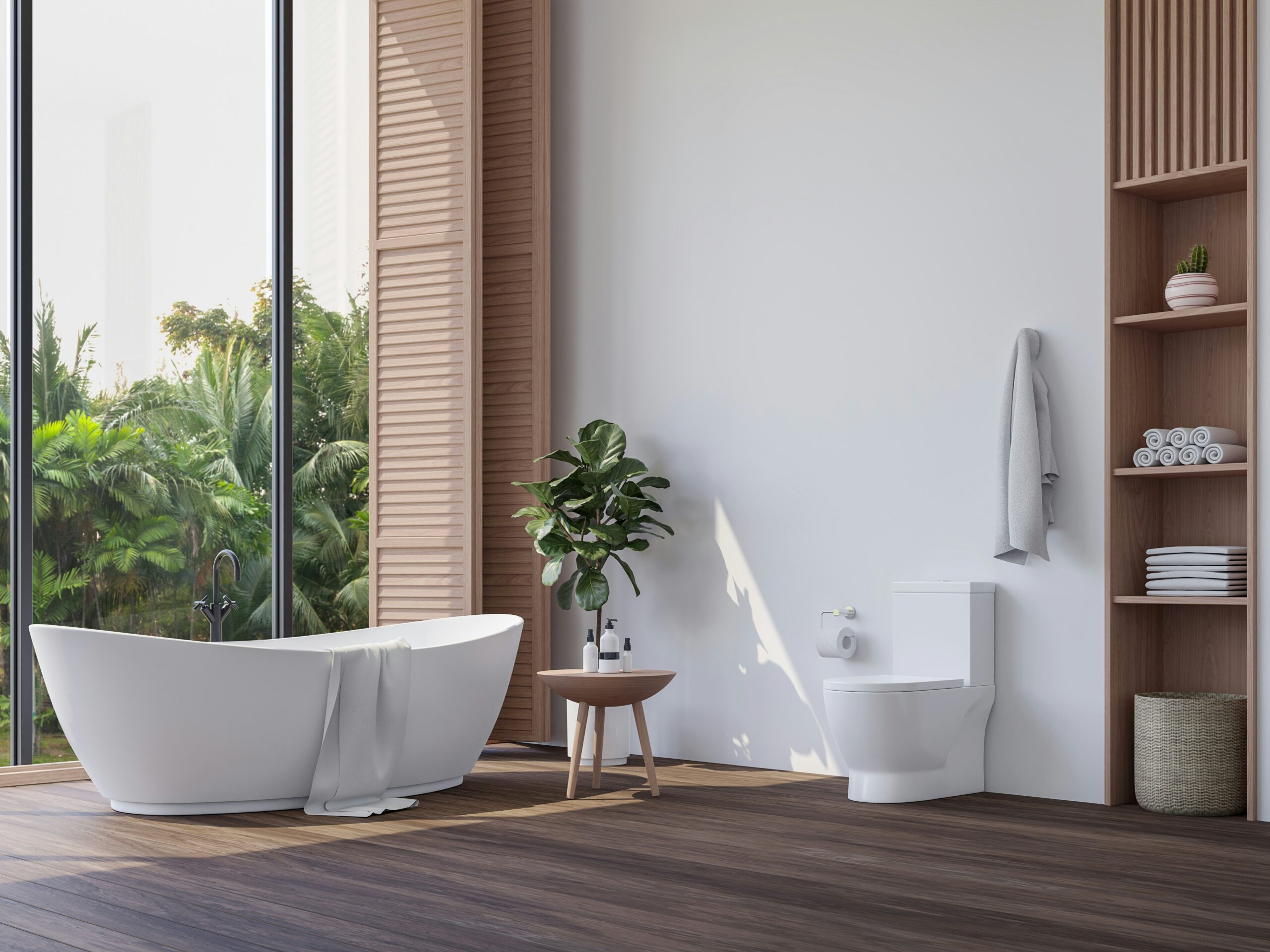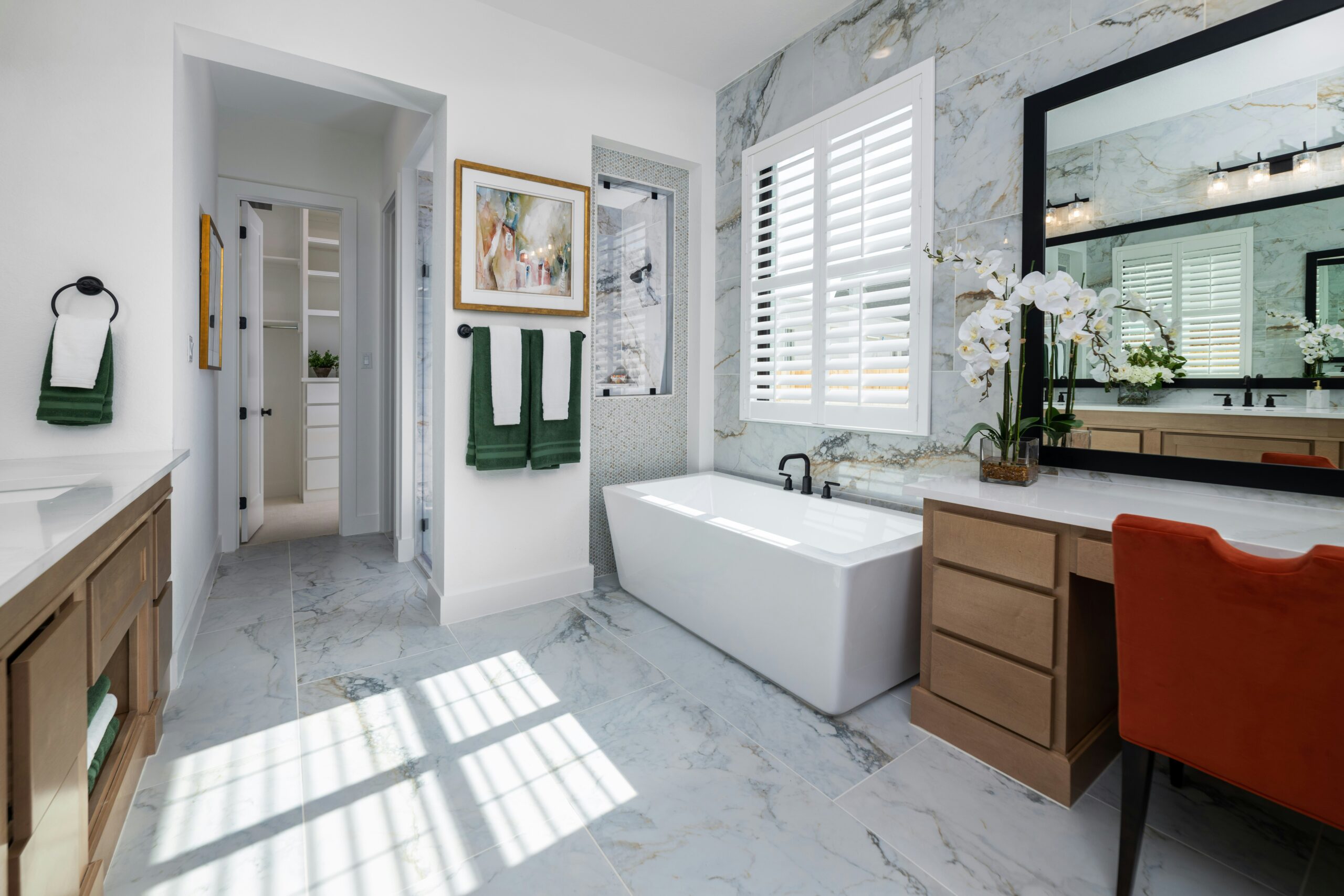A bathroom renovation is an exciting and transformative project, offering you the chance to upgrade both the aesthetic appeal and functionality of one of the most important spaces in your home. Whether you are renovating your master bathroom or a small guest bath, careful planning is key to ensuring a successful remodel. With the right approach, your renovation can improve the space’s style, increase your home’s value, and enhance your daily living experience. In this guide, we’ll walk you through the essential steps you need to take for a smooth and efficient bathroom renovation, from setting a realistic budget to selecting the right materials and finishes.
Establish Your Budget
Before diving into any renovation project, establishing a clear and realistic budget is essential. Bathroom renovations can range from simple cosmetic changes to complete overhauls, and costs can quickly spiral out of control if you don’t plan ahead. Start by determining how much you are willing to spend, then prioritize which elements of the renovation are most important to you.
A typical bathroom remodel might cost between $10,000 and $25,000, depending on the scope of the project. However, a smaller, budget-friendly renovation can be completed for as little as $5,000 to $7,000. Consider the following breakdown when setting your budget:
-
Labor Costs: Typically, contractors charge between $50 to $150 per hour, depending on their experience and location. If you’re in Los Angeles or El Monte, the cost of labor may be on the higher end due to demand.
-
Materials: High-quality materials, including flooring, tiles, countertops, and fixtures, will make up a significant portion of your budget. Be mindful of your choices here, as the materials you select will set the tone for the entire renovation.
-
Permits and Inspections: Some renovations, particularly if you are altering plumbing or electrical systems, may require permits. Always check with your local authorities before starting work to avoid unexpected costs or delays.
Visit a flooring store in Los Angeles for materials, including tiles, vinyl, and laminate options that can fit within your desired budget.

Plan the Layout and Design
Once your budget is in place, it’s time to plan the layout and design of your bathroom. The layout will depend on the space you have available and the changes you wish to make. Consider the flow of the room and how you use the space. A poorly planned bathroom can lead to congestion, lack of storage, and inefficient use of space.
Start by analyzing the current layout and identifying areas that need improvement. Do you need more storage space? Would an updated shower or bathtub make the room more functional? Pay attention to key design elements like the placement of the toilet, sink, and shower or tub. A well-organized layout will make the renovation feel spacious and inviting.
For smaller bathrooms, try opting for space-saving designs such as wall-mounted vanities, floating shelves, or corner sinks to maximize floor area. If you’re working with a larger bathroom, you may consider adding features such as a separate shower and bathtub or double vanity sinks.
Take the time to create a floor plan. Many free online tools allow you to experiment with various layouts to see what works best for your space. Alternatively, a professional bathroom designer can help bring your vision to life with expert advice.
Choose the Right Materials
The materials you select will have a major impact on the overall look and feel of your bathroom. Choosing the right materials is essential not only for aesthetics but also for durability, as bathrooms are high-moisture areas.
Here are a few material considerations for your bathroom renovation:
-
Flooring: Vinyl, tile, and laminate are popular bathroom flooring options, with each offering distinct benefits. For instance, vinyl flooring in El Monte or Los Angeles provides a water-resistant, low-maintenance option that’s also comfortable underfoot. You can find a wide range of designs, from wood-like textures to stone patterns, which can mimic expensive materials without the hefty price tag.
-
Wall Materials: Tiling the walls around your shower or bathtub is a classic choice, as it offers water resistance and easy cleaning. Ceramic and porcelain tiles are durable and come in a wide variety of styles. For a more modern look, consider glass panels or acrylic shower walls.
-
Countertops: Choose materials like granite, quartz, or even marble to create a stylish yet functional countertop. These surfaces are not only beautiful but also durable, making them perfect for a bathroom environment.
-
Cabinets and Vanities: Wood, laminate, or metal cabinets are common options for bathroom storage. Laminate is particularly popular for budget-conscious renovations, as it is both affordable and available in a variety of styles.
For inspiration on how to incorporate these materials into your design, check out resources like Pinterest for bathroom remodeling ideas.

Select the Perfect Flooring
The right flooring is one of the most important decisions you’ll make for your bathroom renovation. You want a material that is both stylish and durable. As previously mentioned, options like vinyl, tile, and laminate are the top choices.
-
Vinyl Flooring: Known for its durability, easy maintenance, and water-resistant qualities, vinyl is an excellent choice for bathroom flooring. Whether you’re looking for vinyl flooring in Los Angeles or vinyl flooring El Monte, you’ll find a wide array of styles that can mimic the look of hardwood, stone, or tile.
-
Laminate Flooring: Laminate is another cost-effective option that mimics the appearance of wood or tile. It’s easy to clean and highly durable, though it may not be as water-resistant as vinyl. Check our laminate flooring options.
-
Tile Flooring: Ceramic, porcelain, or natural stone tiles are highly durable and water-resistant, making them perfect for high-moisture areas like bathrooms. Tile is available in various sizes and finishes, from sleek modern designs to traditional styles.
Make sure to consider your lifestyle and the level of foot traffic your bathroom will see when selecting the material. For easy DIY installation, vinyl flooring offers a great solution, especially if you opt for a DIY installation of laminate flooring option.
Lighting and Ventilation
Proper lighting and ventilation are crucial aspects of any bathroom renovation. Lighting plays a significant role in creating the right ambiance and ensuring that your bathroom is functional for tasks like shaving, applying makeup, or reading.
-
Lighting: Use a combination of task, ambient, and accent lighting. For example, install vanity lights around mirrors for bright task lighting, and use recessed lighting or LED fixtures to create soft ambient lighting.
-
Ventilation: Bathrooms need proper ventilation to prevent moisture buildup, which can lead to mold and mildew. Install an exhaust fan that is appropriately sized for your bathroom’s square footage. Additionally, ensure that windows are easy to open for natural ventilation, especially if your bathroom is windowless.
Storage and Accessories
A well-organized bathroom is a more functional bathroom. Consider your storage needs and plan accordingly. For smaller bathrooms, look for creative storage solutions such as floating vanities, built-in shelves, or even storage mirrors. In larger bathrooms, you might opt for a separate linen closet or additional cabinetry.
Don’t forget to add accessories that elevate your bathroom’s look. Towels, bath mats, shower curtains, and decorative items like plants or framed artwork can add personality and style to the room. Focus on functionality, but also bring in elements that make the space feel comfortable and inviting.

DIY vs. Professional Help
While a DIY bathroom renovation can save you money, it’s important to know when to hire professionals. Some aspects of the renovation, like electrical and plumbing work, should only be handled by licensed experts. If you’re not familiar with installing flooring, tile, or fixtures, it’s best to call in a professional contractor who specializes in bathroom remodeling.
Hiring professionals can help avoid costly mistakes and ensure that the work is done to code, especially when it comes to plumbing and electrical installations. However, if you’re confident in your DIY skills, smaller tasks such as painting, installing flooring, or putting together accessories can be great ways to save on costs.
Conclusion
Planning a bathroom renovation takes time and effort, but the results are well worth it. By establishing a realistic budget, selecting the right materials, and considering factors like flooring, storage, and lighting, you can create a bathroom that fits both your functional needs and your aesthetic desires. Whether you choose to go the DIY route or hire professionals, careful planning will ensure that your bathroom renovation is successful and enjoyable.
Explore more about flooring options and materials at MMY Flooring.

